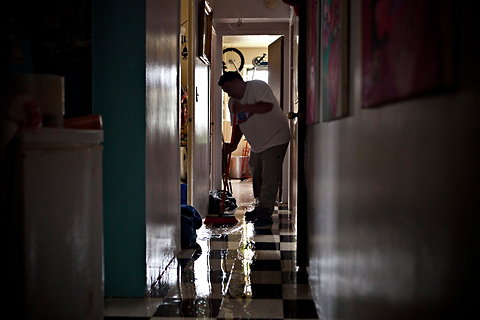Premiums for the National Flood Insurance Program are certain to rise in coming years as a result of a Congressional mandate to bring them into line with real risk levels. The question is, by how much?
The Federal Emergency Management Agency is updating flood hazard maps to assess present-day risks, but until the redrawn maps are finalized, and the rates revised, neither homeowners nor mortgage lenders can accurately estimate the affordability of future premiums.
FEMA is also phasing out the subsidized rates granted to policyholders with homes built before local flood maps were first drawn. The agency estimates that about 20 percent of the 5.5 million policyholders receive these subsidies.
The unknowns around flood insurance rates could pose a problem for lenders, especially because, under the terms of the Dodd-Frank Act, they must document a borrower’s ability to repay a mortgage over the life of the loan, said Doug Rossbach, a vice president in charge of the mortgage banking practice at North Highland, a global consulting firm based in Atlanta. “Premiums could go skyrocketing,” he said. “The lender is in a pretty tough spot. How can the lender know if the borrower can afford to stay in the property, or spend the money to elevate that property?”
Once the maps are revised, some coastal property owners who don’t pay for flood insurance may have to. Lenders haven’t necessarily recognized that yet, as Mr. Rossbach recently discovered when he applied to refinance his house in Rumson, N.J. His house flooded during Sandy, and although he hadn’t been in a flood zone before, preliminary map revisions show that he will be. The lender “never asked me about flood insurance,” he said, “because the effective maps don’t show me in a flood zone. But lenders are beginning to pick up on this, and it’s going to make it tougher for the consumer.”
Chad Berginnis, the executive director of the Association of State Floodplain Managers, noted that homeowners in high-risk areas can significantly cut their premium — which could go as high as $30,000 a year — by elevating their house above the flood level. Homes with structural changes that make them less flood-prone are also likely to rise in value, he said. But, he added, the construction costs can be daunting.
In the Jersey Shore town of Toms River, inland houses are selling, but when it comes to the Sandy-affected properties on the waterfront, “unless you’re giving homes away, no one is buying or selling,” said James A. Flanagan, the broker of record at Coldwell Banker Flanagan Realty. The “big box” lenders are not making loans, leaving it to a few local banks. But even then, Mr. Flanagan said, “buyers want to know, what’s my flood insurance going to be, and I can’t blame them.”
Most of the owners he knows have repaired the damage to their homes, generally using insurance money and their own funds. Now, he said, they are waiting to find out whether they need to raise their houses, what it will cost, and how much they will ultimately pay in flood premiums.
“It’s got us in a pretty good pickle down here,” he said.
A recent report commissioned by FEMA suggests that more homeowners will be confronted with this dilemma in years to come.
The report predicts that, because of climate change, rising sea levels and population growth, the portion of the country at risk for flooding will rise by 40 to 45 percent by 2100.

Article source: http://www.nytimes.com/2013/07/14/realestate/on-floods-and-rising-insurance-premiums.html?partner=rss&emc=rss
